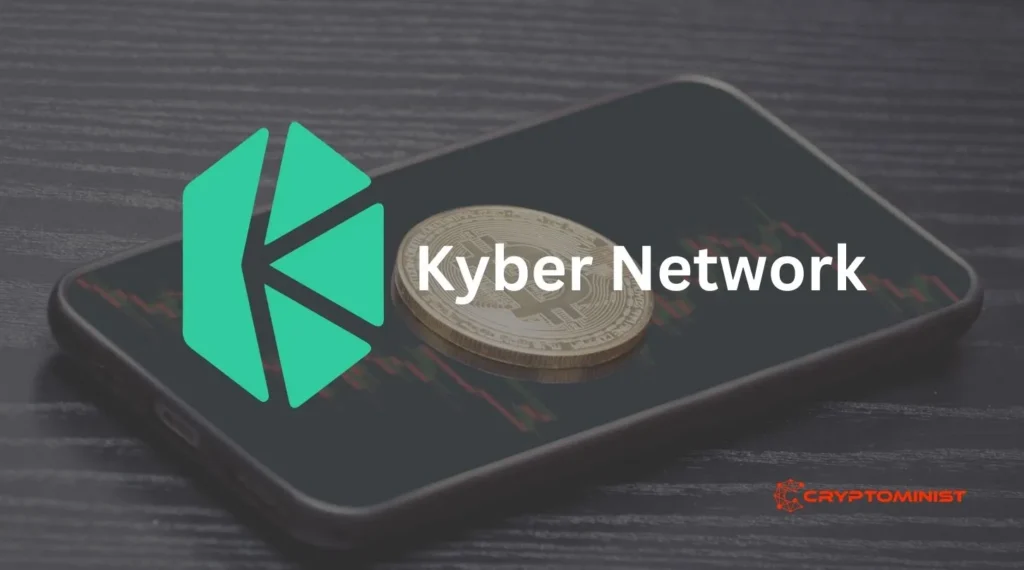Kyber Network is a decentralized liquidity protocol that plays a vital role in the world of decentralized finance (DeFi) by enabling the instant exchange of digital assets, including cryptocurrencies and tokens.
Launched in 2017, Kyber Network has become a cornerstone in the DeFi ecosystem, providing a seamless and secure platform for users to swap one digital asset for another without relying on traditional intermediaries like centralized exchanges.
This article explores the various aspects of Kyber Network, its core functionalities, and its significance within the DeFi landscape.
The Fundamental Principles of Kyber Network

Kyber Network operates based on several fundamental principles, which are essential for a decentralized liquidity protocol:
- Decentralization: Kyber Network is built on the Ethereum blockchain, making use of smart contracts to automate and facilitate the exchange of digital assets. This eliminates the need for a centralized authority to control the process, thus reducing the risk of censorship and manipulation.
- Instant Transactions: The protocol enables real-time, instant transactions, allowing users to quickly exchange one cryptocurrency for another. This instantaneous conversion is essential in the fast-paced world of DeFi, where market conditions can change rapidly.
- Liquidity Provision: Liquidity providers play a significant role in the Kyber Network ecosystem. By contributing assets to liquidity pools, they ensure that there are enough reserves to facilitate efficient swaps. In return, liquidity providers earn fees for their participation.
- Wide Asset Coverage: Kyber Network supports a broad range of digital assets, from well-known cryptocurrencies like Ethereum (ETH) to a multitude of tokens representing various projects and assets. Users can trade tokens without needing to go through a lengthy listing process, thanks to Kyber’s open liquidity protocol.
- Transparency and Security: Operating on the Ethereum blockchain guarantees a high level of security and transparency. Users can verify all transactions on the blockchain, which reduces the risk of fraud and manipulation.
How Kyber Network Works
Kyber Network’s architecture relies on a set of smart contracts deployed on the Ethereum blockchain. These contracts serve as the backbone of the protocol, facilitating the exchange of assets. Here’s how Kyber Network works:
- Reserves: Liquidity providers, known as reserves, pool their digital assets into smart contracts. These reserves are maintained by various entities, such as individuals, businesses, or DeFi projects. Kyber Network accepts a wide variety of assets within these reserves.
- User Requests: When a user initiates a token swap on the Kyber Network, the protocol searches for the best rates among the available reserves. This automated process ensures that users receive competitive rates for their transactions.
- Trade Execution: Once a suitable reserve is identified, the smart contract executes the trade, instantly swapping the user’s input token for the desired output token. This occurs at the agreed-upon rate, ensuring transparency and fairness.
- Fees and Rewards: Kyber Network charges a small fee for each transaction, which is distributed among liquidity providers. This incentivizes users to contribute to liquidity pools, maintaining the protocol’s liquidity.
- Integration: Kyber Network’s liquidity services are integrated into various DeFi applications, including decentralized exchanges, wallets, and decentralized applications (dApps). This integration expands the network’s reach and usability.
The Kyber Network Crystal (KNC)
The Kyber Network Crystal (KNC) is the native utility token of the Kyber Network. KNC plays a vital role within the protocol:
- Governance: KNC holders can participate in governance decisions, including proposals for protocol upgrades and changes.
- Staking and Voting: KNC holders can stake their tokens to vote on important protocol decisions. These decisions often involve adjusting fees, adding new reserves, and other governance matters.
- Fee Payment: KNC is used to pay fees on the network. This includes transaction fees for token swaps and various other fees associated with governance and protocol participation.
The Importance of Kyber Network in DeFi
Kyber Network is a crucial component of the DeFi ecosystem. Its role in providing decentralized liquidity and efficient token swaps is instrumental in the success of various DeFi applications and platforms. DeFi projects and dApps integrate with Kyber Network to offer seamless and transparent token exchange services, ensuring that users can access the assets they need without relying on centralized intermediaries. This aligns with the core principles of the DeFi movement, which aims to create an open and permissionless financial system that empowers users.
Conclusion
Kyber Network’s commitment to decentralization, instant transactions, and liquidity provision has established it as a fundamental player in the world of DeFi. Its ability to support a wide range of digital assets and promote transparency makes it a valuable tool for DeFi projects, users, and liquidity providers alike. As the DeFi ecosystem continues to evolve, Kyber Network’s role in facilitating secure and efficient token swaps is likely to remain a cornerstone of the decentralized financial landscape.
If you like reading the above article, you may also like reading:







